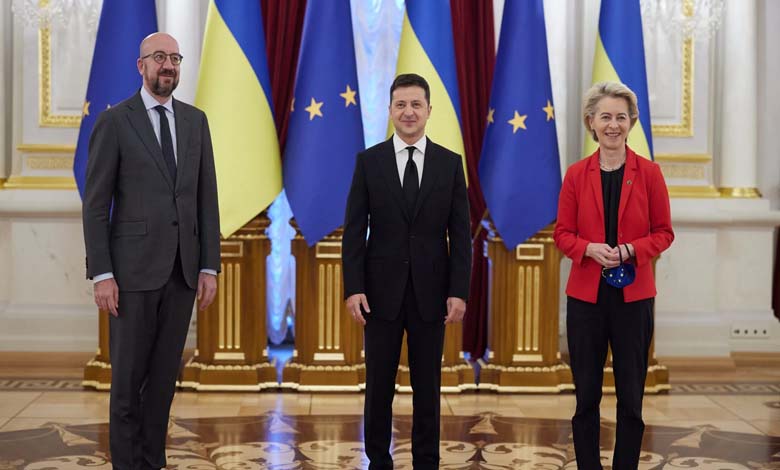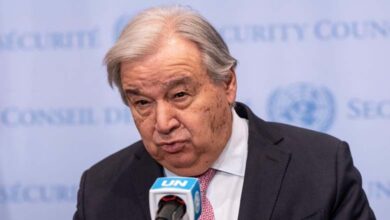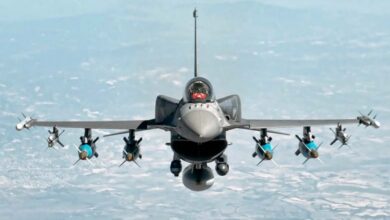Military Spending Challenges and Support for Ukraine: Europe between Ambition and Division

European leaders are struggling to secure the financing and political will needed to compensate for Washington’s contribution to supporting Ukraine and defending Europe.
-
Appointment of a New Chief of Staff: Ukraine’s Attempt to Regain Military Momentum
-
Ukraine and Russia in the “State of the Union”: A Sign of Peace and Readiness for Dialogue
Despite clear messages from the United States urging the enhancement of European defense and support for Ukraine, internal disagreements over financing mechanisms and the varying priorities among member states hinder any significant progress.
The New York Times highlights that the gap between security ambitions and financial reality is widening, especially due to slowing economic growth and rising public debt in countries like Italy and Spain, threatening European unity at a critical moment.
Military Financing: Disagreements Reflecting Deep Divisions
The “Rearming Europe” plan proposed by Ursula von der Leyen, President of the European Commission, estimated at 800 billion euros, has sparked widespread debate. Northern countries, like the Netherlands, oppose increasing shared debt, while France insists on directing the majority of investments towards local defense industries, limiting participation from American and British companies.
-
On the Anniversary of the War in Ukraine… Russia Fails to Understand Trump’s Plan and Sets Its Negotiation Objective
-
Third Anniversary of the War: Ukraine Caught Between Frontline Anxiety and Political Concerns
On the ground, the actual available amount does not exceed 150 billion euros in long-term loans, with borrowing capacity varying among countries: Germany, with a strong budget, can finance the modernization of its army, while Italy, with debt approaching 140% of its GDP, considers any additional defense commitments as an unsustainable burden.
Support for Ukraine: The European Solidarity Dilemma
European efforts to support Kiev hit a financial wall. Kaia Kalas’ proposal, the EU’s High Representative for Foreign Affairs, to impose a unified European tax to support Ukraine with 40 billion euros failed due to opposition from Italy and Slovakia, which prefer to maintain “voluntary” aid.
-
Ukraine without America: Zelensky Talks About “Slim Chances” of Survival
-
“Strategic ‘Toretsk’ in Russian Hands… Ukraine Faces Supply Line Crisis”
Even the smaller alternative — funding two million artillery shells at a cost of 5 billion euros — faced rejection from Paris, which is betting on diplomatic solutions. In a sharp comment on platform X, Kalas described the European stance as “fragmentation threatening the credibility of the entire continent.”
NATO and Trump: A Relationship Full of Doubts
According to the New York Times, Donald Trump‘s repeated remarks about reducing U.S. commitment to NATO paint the worst-case scenario for European leaders. His demand to raise defense spending by members to 5% of GDP, compared to the current 2%, adds additional pressure on fragile European economies.
-
Ukraine’s Bell Rings across Europe: Cooperation to Build a Defense Industrial Base
-
“Gripen”… Swedish Fighter Jet Faces its ‘Toughest Test’ in Ukraine
Leaks of his aides’ discussions — such as Vice President JD Vance’s comment: “I hate saving the Europeans again” — and Trump‘s recent surprising proposal to sell a lower-level version of an advanced U.S. fighter jet to allies fuel fears of Washington becoming an unreliable partner.
Nevertheless, most European countries still reject the idea of doing without the U.S. nuclear umbrella, as European members make up 95% of NATO’s population, making any strategic separation a complex process that could take a decade.
-
Russia and Ukraine Exchange Records in the Drone Warfare
-
Russia and Ukraine: Will the Third Winter Melt the “Ice of War”?
Fragile Security Initiatives
According to the New York Times, Paris and London are attempting to fill the American void with symbolic projects, such as creating a “European reassurance force” in Ukraine following any potential settlement with Russia. However, this initiative — unfunded and with unclear goals — lacks support from member states, while Moscow rejects any Western presence on its territory.
Even the recent partial agreement on ceasing attacks on ships in the Black Sea — which Russia conditioned on lifting sanctions on its agricultural exports — highlights the fragility of any agreements without effective American pressure.
-
In Ukraine… A New Enemy Emerges, and Russia Bets on “Trench Warfare”
-
CNN reveals details of the deadliest Russian attack on Ukraine since the start of the war
The sarcastic remarks from Belgian Prime Minister Bart De Wever reflect the bewilderment of the old continent. While elites recognize the need to transition into an independent defensive power, they lack the political and financial mechanisms to achieve this transformation.
In the absence of a unified vision, the “2023 readiness” could merely become a slogan masking a strategic failure with historical consequences for continental and global security.












